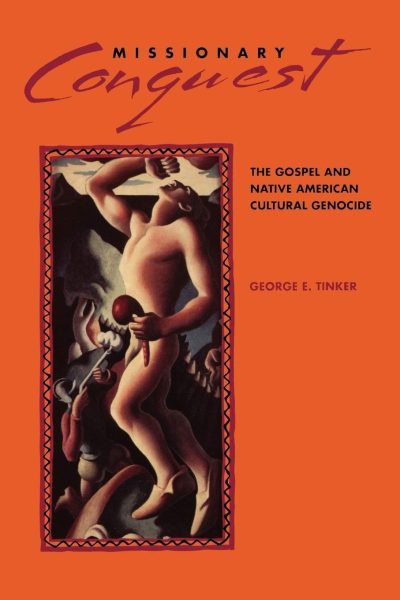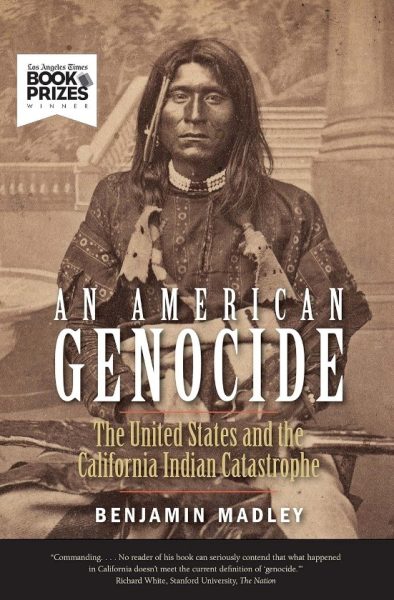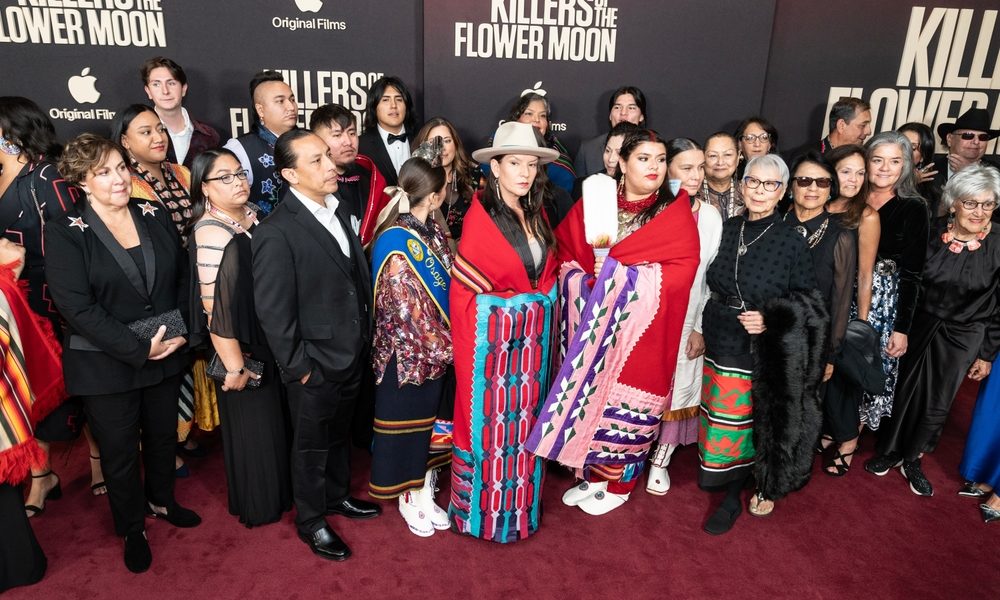 There’s now a new cover for David Ganns’ excellent 2017 book on the Osage murders that occurred in Oklahoma in the 1920s. In case you’ve missed the hype, the revised cover is because of Martin Scorsese’s movie version of this inhumane history. The subtitle is “The Osage Murders and the Birth of the FBI”. The book was a best seller, but the movie’s release will expose this tale to a much wider audience and come as a shock for many who find it unconscionable that such events could have happened as recently as the third decade of the 20th century.
There’s now a new cover for David Ganns’ excellent 2017 book on the Osage murders that occurred in Oklahoma in the 1920s. In case you’ve missed the hype, the revised cover is because of Martin Scorsese’s movie version of this inhumane history. The subtitle is “The Osage Murders and the Birth of the FBI”. The book was a best seller, but the movie’s release will expose this tale to a much wider audience and come as a shock for many who find it unconscionable that such events could have happened as recently as the third decade of the 20th century.
Given our dark history with Native Americans, it shouldn’t. The blockbuster movie with the all-star cast of Robert DeNiro, Leonardo DiCaprio, Lily Gladstone and more than a few current members of the Osage nation was released just last month. It is getting plenty of Oscar buzz despite the actor’s strike, which prevented the normal pre-release publicity tour by the stars.
Until I read Gann’s book, I had never heard this tale of inhumanity. The horrific events described in both the book and movie seem hard to believe. One memorable scene was telling when a mercenary refused to murder another man, until he was told the intended victim was “an Indian.” He then quickly agreed to do the job. The racism was blatant and even embedded in Oklahoma law.
Grann says, “In practice, the decision to appoint a guardian (someone to control their money) — to render an American Indian, in effect, a half-citizen, was nearly always based on the quantum of Indian blood in the property holder, or what a state supreme court justice referred to as ‘racial weakness’.”
Hopefully, this movie will shine additional light on the hundreds of such forgotten injustices that occurred even earlier from coast to coast. While working with two Native American-owned casino resorts in southern California (the Kumeyaay at Viejas and the Luiseño from Pechanga), I became a student of their history, which was filled with stories just as sickening as the Osage tale.
As a young boy, I was taught in California elementary school about the wonderful humanitarian roles played by the early Catholic missionaries who helped Native Americans become civilized. Likewise, everyone knew that all early Indians were savages who relished slaughtering innocent settlers, kidnapping women and setting fire to wagon trains.
Those latter lessons came not in my classroom, but from the double features Hollywood was showing on the big screen. John Wayne defended us all from the hordes in “Fort Apache” (1948), “She Wore A Yellow Ribbon” (1949) and “The Searchers” (1956). Even the affable Jimmy Stewart had to fight off the savages in “Broken Arrow” in 1950. If there was a cowboy movie from 1940 to 1960, you could almost guarantee there was an evil Indian lurking somewhere.
 Thankfully, younger audiences are beginning to see reality-based cinematic tales like 1970s “Little Big Man” or “Soldier Blue.” Likewise, “Killers of the Flower Moon” puts historical events in far more accurate perspective.
Thankfully, younger audiences are beginning to see reality-based cinematic tales like 1970s “Little Big Man” or “Soldier Blue.” Likewise, “Killers of the Flower Moon” puts historical events in far more accurate perspective.
Returning to those wonderful California missionaries. You might find it enlightening (and disgusting) to read George Tinker’s “Missionary Conquest”. Rather than being places of worship, learning and cultural enrichment, the missions are shrines to forced slavery and, using Tinker’s phrase, “cultural genocide”.
One of the tales I often heard from members of the Viejas tribe was about the Spanish soldiers seeking more male slaves to build their missions in the late 18th Century. The name “Viejas” comes from the Spanish name for their land, “El Valle de Las Viejas”, or translated to “The Valley of the Old Women”. According to their stories, the tribe would use spotters on Viejas Mountain (4,189 ft.) to give advance notice that the soldiers were coming from the San Diego coast to “recruit” new workers. Therefore, with these warnings from the lookouts, every time the soldiers arrived, the young men and women had scattered, and the village contained only old women.
Slavery is abhorrent, but murder and genocide are even more unspeakable. The number of Osages murdered during the “Killers” timeframe ranges from 24 to 150. But in California, it is estimated that over 16,000 Indians were intentionally killed. Land, and the gold it contained, was the primary motive.
 If this is news to you, two excellent books on the subject are: “American Genocide” by Benjamin Madley and “Murder State” by Brendan Lindsay.
If this is news to you, two excellent books on the subject are: “American Genocide” by Benjamin Madley and “Murder State” by Brendan Lindsay.
Reading either of these well-researched books is a true eye opener. In June of 2019, Governor Gavin Newsom apologized, “California must reckon with our dark history. California Native American peoples suffered violence, discrimination and exploitation sanctioned by state government throughout its history. We can never undo the wrongs inflicted on the peoples who have lived on this land.”
Just like the Osage that were frequently forced to move from place to place, so were countless other tribes across the country.
Florence Connelly Shipek’s book “Pushed In To The Rocks” tells of the Southern California’s tribes that were continually shuffled from San Diego’s coastal plains and eventually to a rocky, inhospitable canyon known as El Capitan. Even then, that rugged location was seized and filled with water in 1935 to create a reservoir for the City of San Diego. The tribes used their eminent domain money from that forced relocation to buy nearby ranches that, ironically, became great sites for future casinos like Barona, Viejas, Sycuan and others.
Likewise, when I worked at Pechanga Resort Casino between Los Angeles and San Diego, I learned that their tribe, too, had been forcibly evicted from their homes numerous times. There were murders too. Forty tribal members were killed in 1846 in what became known as the “Temecula Massacre”.
Just recently, the tales of extreme abuse at Native American Boarding Schools is finally being told. A reported released as part of the Federal Indian Boarding School Initiative last year outlined how between 1819 and 1969 there were more than 400 schools across 37 states. Shockingly, the report found at least 500 children were buried, often in unmarked graves, at 19 of the schools. To the north, the Canadian Indian Residential School System was also responsible for thousands of Native deaths, primarily from disease.
During my research, I discovered that a few myths from the other side were not completely accurate. Despite tales and citations on the internet, the State of California never offered cash bounties for Indian scalps. There are documented references that scalping was practiced by some whites (more so than Native Americans), and that bounties were offered by a few rogue mining camps. However, it was never officially done by the state.
Likewise, there was no distribution of blankets infested with smallpox to kill Indians. According to the History Channel, “White American settlers and soldiers had murdered large groups of Indians, including women and children, from the 17th century to the end of the 19th century with guns, poison and clubs — but they didn’t use smallpox.” However, they did unintentionally expose the tribes to deadly European versions of influenza, tuberculosis, pneumonia and, yes, smallpox … just not purposely in blanket handouts.
But there’s little else that is redeeming on the side of the settlers. Even two of our long-standing holidays are more myth than fact. And the facts are not good.
Last week many of us sat close with friends and family to celebrate Thanksgiving. In addition to the fellowship, it has historically been a time to remember the wonderful hospitality eastern Native Americans showed for the starving early pilgrims. Unfortunately, not much goodwill was ever returned.
David Silverman does a good job of citing the true history of the time in his book “This Land Is Their Land: The Wampanoag Indians, Plymouth Colony, and the Troubled History of Thanksgiving”. It is still one of my favorite holidays, but no longer because of its origin story.
Prior to my employment with Native Americans, I also had the privilege of working with the legendary Gaming Hall of Famer Don Carano and his four sons at the Eldorado Resort Casino in Reno. They sponsor an annual Italian Festival each year around the Columbus Day holiday. That tribute is to recognize the contributions of Italian-Americans. The list of impressive accomplishments by this heritage group is impossible to narrow: Tony Bennett, Frank Sinatra, Lady Gaga, Bruce Springsteen, Jim Croce, Jon Bon Jovi in music; Rocky Marciano, Joe DiMaggio, Mario Andretti, Joe Montana, Vince Lombardi in sports; Antonin Scalia, Samuel Alito, Nancy Pelosi, Steve Scalise in law and politics. And many, many others.
I hate “cancel culture”. However, when you watch this new movie (and you should make a point to do so) and learn more about factual history, you may better understand why there is such strong support toward eliminating last month’s Columbus Day in favor of Indigenous Peoples’ Day.
In a proclamation for last year’s holiday, President Biden said that Indigenous Peoples’ Day is intended to “honor the sovereignty, resilience and immense contributions that Native Americans have made to the world.”
However, just like my mixed feelings, the White House issued a separate proclamation for Columbus Day, saying that “the hard work, dedication to community and leadership of Italian-Americans in every industry make our country stronger, more prosperous and more vibrant.”
Italian-Americans deserve our recognition, but surely, they could choose a better champion than Columbus. He never set foot in our country, always believed he was in China rather than the Americas, killed dozens of Native Americans and took many of them back to Europe as slaves.
This new holiday is a way of recognizing the countless atrocities mentioned above and the hundreds of lesser-known injustices throughout our country.
It was never put in better perspective than in 1973 when Adam “Fortunate Eagle” Nordwall (a Chippewa tribal member living in California) visited Italy just before the October holiday and planted his own flag there and said, “What right did Columbus have to discover America when it had already been inhabited for thousands of years?” He went on to tell the Italian media, “The same right I now have to come to Italy and proclaim the discovery of your country.”
# # #
NOTE: Today the Osage Nation depicted in the Scorsese movie is comprised of about 20,000 enrolled members. Their reservation is located in northeastern Oklahoma in the Tulsa area. In addition to other economic endeavors, the tribe operates seven casinos.






